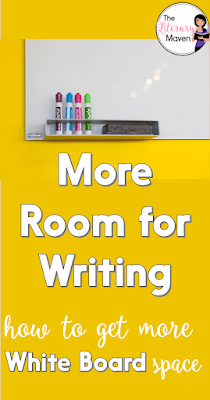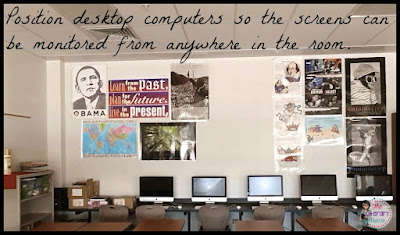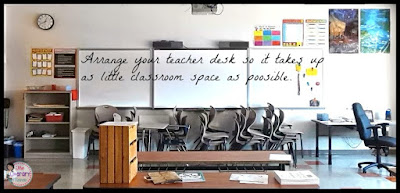My school recently purchased Sadlier-Oxford's Vocabulary Workshop to use with each grade level. In the past, I created a root-based vocabulary curriculum to use with my students, but I had to switch over to the Sadlier-Oxford program since my school bought the books and wanted to get their money's worth of usage.
Each Sadlier-Oxford unit includes twenty words, which is way too many for students to master in one week (I used to do just five a week when teaching roots). While in the past I could use a game to review the day of the quiz, with twenty words I decided to devote at least one day every two weeks (I teach a unit of twenty words every two weeks) to allow students more practice with the words.
If the students aren't given opportunities to practice with the words then they will never own them. Just doing homework isn't enough; students need multiple exposures in a variety of contents. I do this through a variety of vocabulary games, all of which can be played individually or in groups. Here's a look at five of those games.
 Game 1: Ask students to rate their reaction to situations. I ask them how happy they would be (1 = not happy at all to 5 = overjoyed) given a certain situation. Instead of ranking happiness, you could have students rank the amount of energy required for an action or activity, the cost, etc. This game allows students to see their vocabulary words used in different contexts. I try to make the contexts as relevant to students as possible.
Game 1: Ask students to rate their reaction to situations. I ask them how happy they would be (1 = not happy at all to 5 = overjoyed) given a certain situation. Instead of ranking happiness, you could have students rank the amount of energy required for an action or activity, the cost, etc. This game allows students to see their vocabulary words used in different contexts. I try to make the contexts as relevant to students as possible.
Game 2: Ask students to identify the better example of the vocabulary word. This is a great way to practice the idea of shades of meaning. Like Game 1, this game also allows students to see their vocabulary words used in different contexts and I try to make the contexts as relevant to students as possible.

Each Sadlier-Oxford unit includes twenty words, which is way too many for students to master in one week (I used to do just five a week when teaching roots). While in the past I could use a game to review the day of the quiz, with twenty words I decided to devote at least one day every two weeks (I teach a unit of twenty words every two weeks) to allow students more practice with the words.
If the students aren't given opportunities to practice with the words then they will never own them. Just doing homework isn't enough; students need multiple exposures in a variety of contents. I do this through a variety of vocabulary games, all of which can be played individually or in groups. Here's a look at five of those games.
 Game 1: Ask students to rate their reaction to situations. I ask them how happy they would be (1 = not happy at all to 5 = overjoyed) given a certain situation. Instead of ranking happiness, you could have students rank the amount of energy required for an action or activity, the cost, etc. This game allows students to see their vocabulary words used in different contexts. I try to make the contexts as relevant to students as possible.
Game 1: Ask students to rate their reaction to situations. I ask them how happy they would be (1 = not happy at all to 5 = overjoyed) given a certain situation. Instead of ranking happiness, you could have students rank the amount of energy required for an action or activity, the cost, etc. This game allows students to see their vocabulary words used in different contexts. I try to make the contexts as relevant to students as possible.
Game 3: Ask students to determine if the two given words are synonyms or antonyms. As the year goes on, you can incorporate words from past units as the synonym or antonym.
Game 4: This is a "speed round." I give the students 3 minutes to try to unscramble all of their words; they must be spelled correctly to earn points. While it doesn't help students attach meaning to their words, it allows students to see which words they don't even recognize after a week of instruction and independent practice (their homework).

Game 5: My students' absolute favorite game is Pictionary. Every single student wants to draw and can hardly wait their turn. I love it because there is no preparation needed for this. Each artist gets a minute to draw and then teams get another minute to guess. I have them write down their answers instead of yelling them out to increase the number of students able to participate. You have to trust that the artists won't just tell their teams the answers.
I love playing games on Mondays because it allows the students to talk and work together. It also means no paperwork or grading for me to start off the week. Finally, it allows me to identify the words which with students are still struggling and need more practice.
If you are also using Sadlier-Oxford Vocabulary Workshop, Level D with your students, you can find supplemental resources for those units here.

Game 5: My students' absolute favorite game is Pictionary. Every single student wants to draw and can hardly wait their turn. I love it because there is no preparation needed for this. Each artist gets a minute to draw and then teams get another minute to guess. I have them write down their answers instead of yelling them out to increase the number of students able to participate. You have to trust that the artists won't just tell their teams the answers.
I love playing games on Mondays because it allows the students to talk and work together. It also means no paperwork or grading for me to start off the week. Finally, it allows me to identify the words which with students are still struggling and need more practice.
If you are also using Sadlier-Oxford Vocabulary Workshop, Level D with your students, you can find supplemental resources for those units here.






















